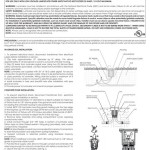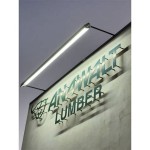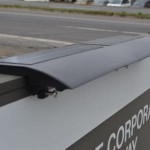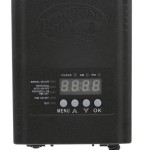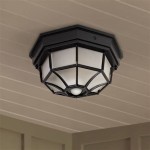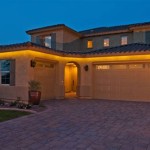How To Light Up Outdoor Plants For Winter
Winter's shorter days and weaker sunlight can pose a challenge for outdoor plants. Supplemental lighting offers a solution, enabling plant enthusiasts to extend the growing season, protect vulnerable species, and even cultivate specific varieties throughout the colder months. This article explores the key considerations and techniques for effectively lighting outdoor plants during winter.
Understanding Plant Lighting Needs
Plants rely on light for photosynthesis, the process of converting light energy into chemical energy for growth. Different plant species have varying light requirements. Some thrive in full sun, while others prefer shade or partial shade. Understanding the specific needs of the target plants is crucial for selecting appropriate lighting solutions.
Key factors influencing plant lighting requirements include light intensity, duration, and spectrum. Light intensity refers to the amount of light energy reaching the plant. Duration represents the length of time the plant is exposed to light. Light spectrum refers to the specific wavelengths of light absorbed by the plant. Chlorophyll, the pigment responsible for photosynthesis, absorbs red and blue light most effectively.
Choosing the Right Light Source
Several artificial light sources can be used for supplementing plant lighting during winter. These include incandescent bulbs, fluorescent lamps, high-intensity discharge (HID) lamps, and light-emitting diodes (LEDs). Each type has its advantages and disadvantages.
Incandescent bulbs are readily available and inexpensive but are inefficient and emit mostly heat rather than usable light for plants. Fluorescent lamps offer better efficiency and a broader light spectrum but may not provide the intensity required for some plants. HID lamps, such as metal halide and high-pressure sodium lamps, deliver high light intensity but can be costly to operate and generate significant heat. LEDs are increasingly popular due to their energy efficiency, long lifespan, and customizable light spectrum. They also generate less heat than other options.
Determining Light Placement and Duration
Correct light placement is essential for optimal plant growth. Lights should be positioned close enough to provide adequate intensity but not so close as to scorch the plants. The ideal distance varies depending on the light source and plant species. Observing the plants for signs of light stress, such as leaf discoloration or wilting, can help determine appropriate placement.
The duration of supplemental lighting depends on the plant's natural light requirements and the ambient light levels during winter. Extending the natural day length by a few hours can be sufficient for some plants, while others may require 12-16 hours of light per day. Using a timer can ensure consistent lighting duration.
Protecting Plants from Winter Elements
While supplemental lighting addresses the issue of reduced sunlight, winter weather presents other challenges for outdoor plants. Low temperatures, frost, wind, and snow can damage or kill plants. Protective measures are often necessary in conjunction with supplemental lighting.
Cold frames, greenhouses, or row covers can provide insulation and protection from the elements. Covering plants with burlap or frost blankets on particularly cold nights can prevent frost damage. Ensuring proper drainage and avoiding overwatering can also help plants withstand winter conditions.
Monitoring and Adjusting Lighting Strategies
Regularly monitoring plant health is essential for optimizing lighting strategies. Observing plant growth, leaf color, and overall vigor can indicate whether the lighting setup is effective. Adjusting the light intensity, duration, or spectrum as needed can ensure that plants receive the appropriate light levels for optimal growth.
Factors such as changes in weather conditions, plant maturity, and seasonal variations can influence lighting needs. Remaining adaptable and making adjustments throughout the winter months can contribute to successful outdoor plant cultivation.
Considering Energy Efficiency
Supplemental lighting can impact energy consumption. Opting for energy-efficient light sources, such as LEDs, can help reduce energy costs. Utilizing timers and reflectors can also optimize light usage and minimize waste. Proper insulation of protected areas, such as greenhouses or cold frames, can further reduce energy requirements for heating.
Specific Plant Considerations
Different plant types have unique lighting requirements. Seedlings and young plants generally require higher light intensities than mature plants. Flowering plants may need specific light spectrums or durations to initiate blooming. Researching the specific needs of the target plants can ensure optimal lighting strategies.
Safety Precautions
When working with electrical lighting equipment outdoors, safety precautions are essential. Ensure all wiring is weatherproof and properly grounded. Use outdoor-rated extension cords and connections. Regularly inspect lighting equipment for damage and avoid overloading circuits. Following recommended safety guidelines can prevent electrical hazards.

Outdoor Winter Container Garden Ideas And Inspiration

Container Planting

5 Ways To Warm Up Your Garden Bury Hill Topsoil Blog

How Does Seattle Led Landscape Lighting Handle The Snow Outdoor Perspectives

How To Design A Winter Garden Blossoming Gardens

Winter Garden Shoots Page 3

Courtyard Design Winter Mission

How To Choose The Right Outdoor Lighting For Winter Evenings Decorating Elves

Can Landscape Lights Stay Out In Winter

10 Easy Pieces Landscape Up Lights Gardenista
Related Posts
